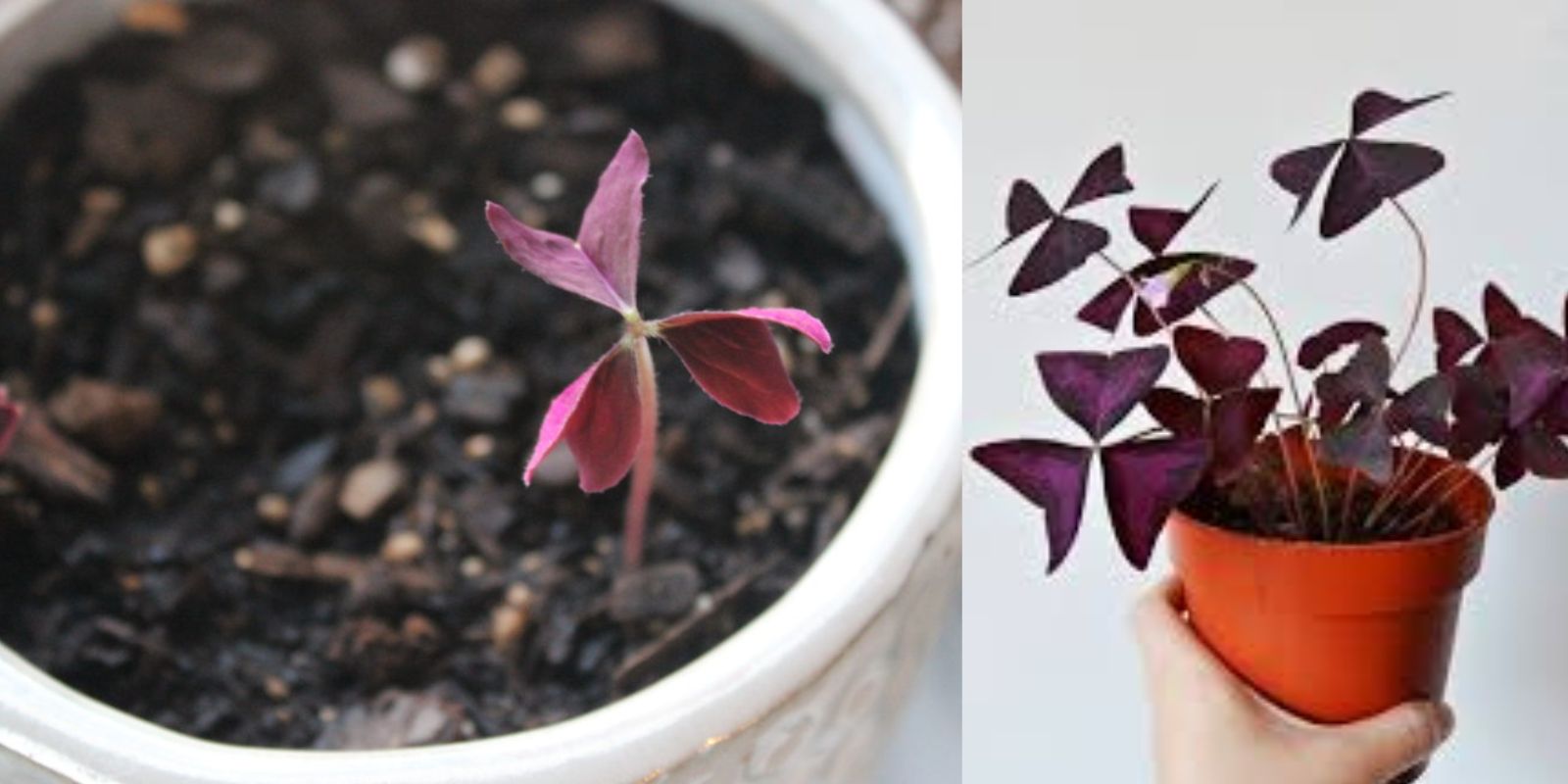Introduction
Oxalis Triangularis, also known as the Purple Shamrock or False Shamrock, is a beloved houseplant known for its deep purple, butterfly-shaped leaves and small, delicate flowers. Native to South America, this plant has gained popularity worldwide for its unique, striking appearance and relatively simple care requirements. This guide will walk you through everything you need to know to grow and maintain a healthy, vibrant Oxalis Triangularis in your home.
What Makes Oxalis Triangularis Unique?
Oxalis Triangularis stands out with its color-changing leaves, which open in bright light during the day and close at night, almost mimicking a butterfly’s wings. The plant’s deep purple color, highlighted by occasional white or pale pink blooms, makes it an attractive addition to any indoor garden. Another fascinating characteristic of Oxalis is its dormancy period, where the plant essentially “rests” before producing a new flush of growth.
Essential Requirements for Growing Oxalis Triangularis
Oxalis Triangularis is relatively low-maintenance, but like any plant, it thrives best under specific conditions. Here’s how to set up your Purple Shamrock for success:
- Choosing the Right Pot
- Drainage: Since Oxalis is susceptible to root rot, choosing a pot with drainage holes is crucial. Excess water must be able to drain away from the roots.
- Size: A medium-sized pot works well for Oxalis, giving the tubers (underground storage structures) enough room to grow.
- Light Requirements
- Indirect Sunlight: Oxalis prefers bright, indirect light. A location near a window with filtered sunlight will help keep its leaves vibrant. Too much direct sunlight can cause scorching, but low light might result in the plant becoming leggy and less colorful.
- Indoor vs. Outdoor: If grown outdoors, make sure the plant is placed in a spot that receives dappled shade to avoid intense sun exposure.
- Soil Selection
- Well-Draining Soil: A standard potting mix with added perlite or sand for aeration and drainage is ideal. A peat-based potting mix can also work well as it retains moisture without becoming waterlogged.
- Watering Needs
- Moderate Watering: Oxalis Triangularis does best with a consistent watering schedule. Water the plant when the top inch of soil feels dry. Allow excess water to drain out completely, as sitting water can lead to root rot.
- Dormancy Adjustment: During dormancy (usually in late fall or winter), reduce watering to avoid stressing the plant.
- Temperature and Humidity
- Temperature: Oxalis thrives in average room temperatures between 60-75°F (15-24°C). Avoid placing it in areas with sudden temperature changes, such as near heaters or open windows during winter.
- Humidity: The plant does well in average indoor humidity levels, though it appreciates occasional misting if the air becomes too dry.
- Fertilizing Tips
- Balanced Fertilizer: During the growing season, feed Oxalis Triangularis with a balanced, water-soluble fertilizer diluted to half strength. Apply every 4-6 weeks to support healthy growth and vibrant foliage.
- Managing Dormancy
- Recognizing Dormancy: It’s normal for Oxalis to enter a dormant period, usually after its growth phase. When the plant starts to die back, reduce watering, trim away the dead foliage, and store the pot in a cool, dim spot for a few weeks.
- Breaking Dormancy: To bring the plant out of dormancy, begin watering more frequently and place it back in bright, indirect light. Soon, you’ll see new shoots emerging.
- Pruning and Maintenance
- Regular Pruning: Trimming away faded flowers and damaged leaves will keep your Oxalis looking its best. Removing dead foliage can also help prevent pests and diseases.
- Division: Every couple of years, you can dig up and divide the tubers in the soil to propagate new plants. This also helps rejuvenate older plants.
- Common Issues and Troubleshooting
- Leaf Yellowing: This can indicate overwatering or insufficient light. Adjust your care routine to match the plant’s requirements.
- Leggy Growth: Usually caused by inadequate light. Try moving the plant to a brighter spot.
- Pests: Oxalis is generally pest-free, though it can occasionally attract aphids or spider mites. Treat infestations by rinsing the plant with water and using a mild insecticidal soap if needed.
- Propagation
- Propagation Through Division: The easiest way to propagate Oxalis is by dividing its tubers. To do this, carefully remove the plant from its pot, separate the tubers, and replant them in fresh soil.
- Steps for Division: Dig out the plant gently, separate the tubers, and replant each tuber in a new pot. Water thoroughly and place in indirect light.
Why Add Oxalis Triangularis to Your Plant Collection?
Oxalis Triangularis is an incredibly rewarding plant. Not only does it bring an eye-catching pop of color, but its unique leaf movements provide an added dimension to any plant collection. Plus, the low maintenance requirements make it perfect for both beginners and experienced gardeners alike.
Interaction Prompt
Ready to add a splash of purple to your home? Share your Oxalis journey with us! #PurpleShamrock #OxalisTriangularis #PlantCare #IndoorPlants #GardeningJoy #HouseplantLove #PlantParent

